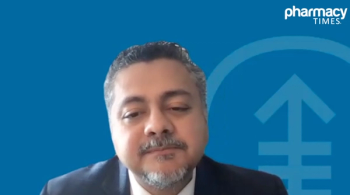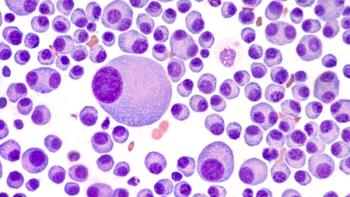
How Cuts to Federal Health Agencies Fuel Chronic and Infectious Disease Crises
Key Takeaways
- Funding cuts to key agencies have weakened public health infrastructure, exacerbating chronic illness and infectious disease outbreaks.
- Deregulation and defunding have reduced workforce capacity, hindered research, and rolled back environmental protections, increasing exposure to pollutants and pathogens.
Funding cuts to public health agencies threaten to worsen chronic diseases and ignite infectious disease outbreaks, straining health care systems nationwide.
Chronic illnesses affect nearly 129 million people in the US and contribute to roughly 70% of all deaths each year. Since 2025, substantial funding cuts to public health agencies such as the FDA, CDC, Environmental Protection Agency, and National Institutes of Health have weakened the infrastructure designed to protect communities. The removal of these protections will contribute to rising rates of chronic illness and the resurgence of infectious diseases, placing greater strain on health care systems and communities across the country.1
The rollback of public health protections and defunding of key agencies are deeply interconnected and undermine the systems designed to prevent illness, manage chronic disease, and contain infectious threats. When protections across environmental, medical, and regulatory sectors are dismantled, it creates a compounding crisis where chronic conditions become harder to manage, infectious diseases spread more easily, and health systems are further strained.
“I don't think many people understand how it all comes together,” Jerome Adams, MD, former US surgeon general, said in an interview with Pharmacy Times®. “These federal rollbacks aren't policy shifts that are isolated. They are converging threats—creating the perfect storm for worsening chronic illness and setting us up for the resurgence of infectious diseases.”
Defunding and Deregulation of Federal Agencies
The defunding and deregulation efforts are widespread, touching nearly every sector responsible for safeguarding public health and safety. Federal employees, health care workers, and researchers are all feeling the impact as budget cuts translate into reduced capacity, fewer protections, and a diminished national response infrastructure.2
Workforce reductions across key agencies are limiting the government’s ability to monitor emerging threats, enforce safety standards, and conduct lifesaving research. Among the hardest hit is the NIH, where funding cuts are already disrupting critical research into vaccines, cancer therapies, and antimicrobial resistance—a growing crisis that already claims an estimated 35,000 American lives each year, according to Adams.3
“When we cut research, we delay cancer treatments, we slow antibiotic development, and we weaken our ability to fight the next pandemic,” he said.
Environmental Regulations
Since the start of widespread efforts to defund and deregulate federal agencies, the EPA has rolled back key environmental protections related to water sanitation, air pollution, and agriculture, leading to serious consequences for public health. These rollbacks have increased community exposure to harmful pollutants, toxic chemicals, and pathogens, all of which contribute to chronic disease and the resurgence of infectious outbreaks.4
On March 12, 2025, the EPA announced the rollback of 31 historic environmental protections, such as the Mercury and Air Toxics Standards and multiple National Emission Standards for Hazardous Air Pollutants, which are key provisions that regulate emissions from American energy and manufacturing sectors. Air pollution is not limited to respiratory disorders, but is also strongly associated with increased risk of numerous chronic illnesses. Exposure to toxic chemicals released by factories has been directly linked to conditions such as cancer and heart disease.5-7
The 1972 Clean Water Act is also affected. In a 5-to-4 ruling, the Supreme Court weakened rules on the discharge of sewage into water systems, increasing public exposure to pathogens, bacteria, heavy metals, and microplastics. There are various consequences of this: pathogens can contaminate drinking water and recreational waterways, leading to outbreaks of waterborne diseases; bacteria such as Escherichia coli (E coli) and salmonella may thrive in untreated wastewater, increasing risks of gastrointestinal illness; heavy metals like lead and mercury can accumulate in local ecosystems and enter the food chain, contributing to long-term neurological and developmental harm.8
“When we roll back clean air and water protections, it's not just polluting the planet—we're increasing our own risk of chronic disease,” explained Adams. “Beyond that, we’re also making infections like COVID[-19], flu, measles, and polio more likely [to occur] and more dangerous. So that's one bucket. Another bucket—which is very hard for people to understand, because you can't see it—is toxic exposure to lead, [perfluoroalkoxy alkanes], and other pollutants which damage our immune systems. Deregulating them is simply opening the front door and inviting disease to come through.”
Food Safety
There is also growing concern around food safety. Funding and staffing cuts at regulatory agencies mean inspectors are stretched thin as production lines move faster than ever. Fewer available inspectors mean there is less time to thoroughly examine products for contamination and catch foodborne pathogens such as Salmonella, E coli, and Listeria before they reach grocery shelves.9
“With fewer public health workers, fewer inspectors, we're flying blind into the next outbreak. You're already hearing this at a local level,” explained former US Surgeon General Jerome Adams, MD. “Faster meat-packing lines, fewer inspectors, mean more foodborne illnesses and antibiotic-resistant infections.”
The dangers of foodborne illness go far beyond temporary food poisoning. These infections can lead to serious complications, including kidney failure, neurological damage, or even death in vulnerable populations (eg, children, older adults, pregnant individuals, and immunocompromised patients). Inadequate oversight also allows for the spread of antibiotic-resistant bacteria through the food supply, compounding the risk and reducing treatment options.10
Infectious Disease Outbreaks
The US is experiencing a notable rise in infectious disease outbreaks. Measles cases have reached a 33-year high, with 1267 reported cases—although experts caution the true number may be higher due to underreporting. Other infectious diseases are also seeing an uptick, including tuberculosis, pertussis, and a range of foodborne illnesses.11-15
The increasing prevalence and severity of infectious diseases can be connected to substantial declines in vaccination rates during the COVID-19 pandemic—a result of heightened vaccine skepticism among the public. As rates fall, the likelihood of losing herd immunity grows, allowing for increased spread of disease.
"We're getting a crash course in herd immunity. We're getting it in Texas right now,” said Adams. “We get this invisible layer of action from herd immunity that we don't see and that we don't perceive."
This rise in infectious diseases is further fueled by the deregulation and defunding of public health agencies, including significant cuts to vaccine research funding and the weakening of environmental protections. Reduced resources limit the development of new vaccines and hinder efforts to monitor and respond to outbreaks. Simultaneously, rollbacks in environmental safeguards increase exposure to pollutants that can weaken immune systems, making populations more susceptible to severe infection.16
Combatting Chronic Illness
Defunding government agencies leads to the deregulation of key legislation and programs that ensure the health and safety of the American people. Although individuals can take action to prevent chronic illness, exposures to unclean water, air pollution, and unsafe food make it nearly impossible to overcome or avoid risk factors for chronic diseases such as heart disease, respiratory disorders, diabetes, and cancer.
Combatting the chronic illness epidemic is critical and requires the collaboration of health care professionals, federal agencies, state institutions, and communities; however, that collaboration is only possible when the systems designed to protect public health are properly funded, staffed, and empowered to act.
“Public health is like the roof on your house. When it's working fine, you don't even notice it's there. But when a storm comes and it starts leaking, all of a sudden, everybody notices.”
REFERENCES
1. Benavidez G, Zahnd W, Hung P, et al. Chronic disease prevalence in the US: Sociodemographic and geographic variations by zip code tabulation area. CDC. February 29, 2024. doi:10.5888/pcd21.230267
2. Hsu A. Officially, 59,000 federal jobs are gone under Trump. There's more to the picture. NPR. June 6, 2025. Accessed July 7, 2025. https://www.npr.org/2025/06/04/nx-s1-5421277/trump-federal-workers-layoffs-doge
3. Ordner N. NIH budget cuts threaten the future of biomedical research — and the young scientists behind it. LA Times. July 6, 2025. Accessed July 7, 2025. https://www.latimes.com/science/story/2025-07-06/nih-budget-cuts-threaten-the-future-of-medical-research-and-young-scientists
4. The Trump administration’s cancellation of funding for environmental protections endangers Americans’ health while draining their wallets. American Progress. April 2, 2025. Accessed July 7, 2025. https://www.americanprogress.org/article/the-trump-administrations-cancellation-of-funding-for-environmental-protections-endangers-americans-health-while-draining-their-wallets/
5. Copley M, Brady J, Domonoske C. EPA announces dozens of environmental regulations it plans to target. NPR. March 12, 2025. Accessed July 7, 2025. https://www.npr.org/2025/03/12/nx-s1-5326354/trump-epa-environmental-rules-rollback-deregulation
6. EPA launches biggest deregulatory action in U.S. history. EPA. March 12, 2025. Accessed July 7, 2025. https://www.epa.gov/newsreleases/epa-launches-biggest-deregulatory-action-us-history
7. Health impacts of air pollution. WHO. Accessed July 7, 2025. https://www.who.int/teams/environment-climate-change-and-health/air-quality-energy-and-health/health-impacts
8. Sherman M. Supreme Court makes it harder for EPA to police sewage discharges. Associated Press. March 4, 2025. Accessed July 7, 2025. https://apnews.com/article/supreme-court-san-francisco-water-pollution-6874dc505a394d9181b17a0aef41406f
9. Jewett C. Food safety jeopardized by onslaught of funding and staff cuts. New York Times. March 19, 2025. Accessed July 7, 2025. https://www.nytimes.com/2025/03/19/health/food-safety-trump-fda-cutbacks-deadly-outbreaks.html
10. Food poisoning. Food Safety.gov. August 20, 2020. Accessed July 7, 2025. https://www.foodsafety.gov/food-poisoning
11. U.S. measles cases reach 33-year record high as outbreaks spread. Washington Post. July 7, 2025. Accessed July 7, 2025. https://www.washingtonpost.com/health/2025/07/07/measles-cases-hit-record/
12. Measles cases and outbreaks. CDC. July 2, 2025. Accessed July 7, 2025. https://www.cdc.gov/measles/data-research/index.html
13. Brown S. Tuberculosis on the rise again in the United States. US News. March 26, 2025. Accessed July 7, 2025. https://www.usnews.com/news/health-news/articles/2025-03-26/tuberculosis-on-the-rise-again-in-the-united-states
14. Bose D. Whooping cough cases are rising again in the US. Associated Press. April 24, 2025. Accessed July 7, 2025. https://apnews.com/article/whooping-cough-pertussis-tdap-vaccination-outbreak-eb8f4776fdd0796ad789aac1ccdc9b67
15. Active investigations of multistate foodborne outbreaks. CDC. June 18, 2025. Accessed July 7, 2025. https://www.cdc.gov/foodborne-outbreaks/active-investigations/index.html
16. Rogin A. The effect of NIH funding cuts on vaccine access and hesitancy research. PBS. March 22, 2025. Accessed July 7, 2025. https://mjh.sanity.studio/pharmacytimes/structure/article;2ae5d37b-c2f1-4383-9ee9-83b27e117696
Newsletter
Stay informed on drug updates, treatment guidelines, and pharmacy practice trends—subscribe to Pharmacy Times for weekly clinical insights.




















































































































































































































